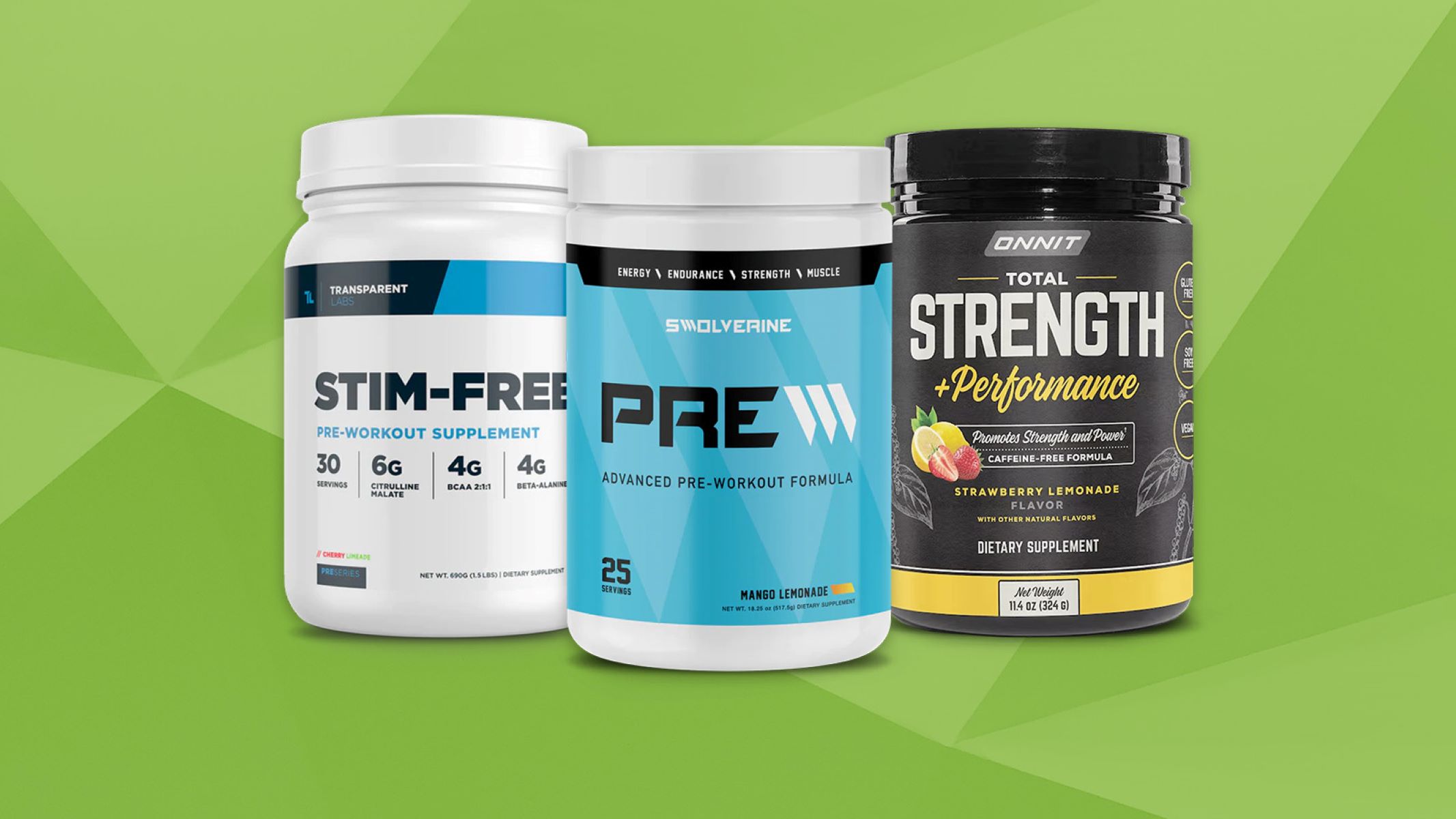

Featured
How To Improve Vascular Health
Published: September 9, 2023
Discover the top tips and techniques for improving vascular health. Stay updated with our featured articles on maintaining a healthy cardiovascular system.
Introduction
Welcome to this comprehensive guide on how to improve vascular health. Our blood vessels play a crucial role in carrying oxygen and nutrients throughout our bodies, so it’s important to prioritize the well-being of our vascular system. By understanding the factors that can negatively impact vascular health and implementing healthy habits, we can work towards improving our overall cardiovascular function and reducing the risk of developing conditions such as heart disease, stroke, and peripheral artery disease.
Your vascular health is influenced by various lifestyle factors, including your diet, level of physical activity, smoking habits, stress levels, and more. This guide will provide you with practical tips and strategies that you can incorporate into your daily routine to support and enhance the health of your blood vessels.
While these recommendations are not substitutes for professional medical advice, they are evidence-based practices that can promote better vascular health. It’s always a good idea to consult with your healthcare provider before making any significant changes to your lifestyle, especially if you have pre-existing medical conditions.
So, whether you’re looking to improve your cardiovascular fitness, prevent future health issues, or simply want to enhance your overall well-being, this guide will provide you with the information and tools you need to make positive changes and optimize your vascular health.
Let’s dive in and discover how you can take charge of your vascular health and lead a healthier, more vibrant life!
Understanding Vascular Health
Vascular health refers to the condition and function of the blood vessels in our bodies. The vascular system consists of arteries, veins, and capillaries that work together to transport blood, oxygen, and nutrients to all parts of the body. It is crucial for overall health and well-being as it supports the proper functioning of organs, muscles, and tissues.
Problems with vascular health can arise when the blood vessels become damaged, narrowed, or blocked. This can lead to a variety of cardiovascular conditions, including atherosclerosis, hypertension (high blood pressure), peripheral artery disease, and stroke.
There are various factors that can contribute to poor vascular health. One of the most common causes is a buildup of plaque, made up of cholesterol, fat, and calcium, inside the arteries. This condition, known as atherosclerosis, restricts blood flow and can lead to serious complications.
Other risk factors for poor vascular health include smoking, high blood pressure, high cholesterol levels, obesity, sedentary lifestyle, diabetes, and a family history of cardiovascular disease. Additionally, certain medical conditions, such as autoimmune diseases and chronic kidney disease, can also impact the health of your blood vessels.
It’s important to note that vascular health is closely linked to overall cardiovascular health. The two are often used interchangeably, as the blood vessels are a crucial component of the cardiovascular system. Taking steps to improve vascular health can have a positive impact on your heart health as well.
Now that we have a basic understanding of what vascular health entails, let’s explore the risk factors in more detail and discover why it’s so important to maintain good vascular health.
Risk Factors for Poor Vascular Health
Several risk factors can contribute to poor vascular health and increase the likelihood of developing cardiovascular diseases. Understanding these risk factors is crucial for taking proactive measures to improve and maintain vascular health.
1. Smoking: Smoking is a major risk factor for vascular diseases. The chemicals in tobacco smoke can damage the lining of blood vessels, leading to inflammation and the formation of plaque. It can also contribute to high blood pressure and reduced oxygen levels in the blood.
2. High blood pressure: Elevated blood pressure puts extra strain on the blood vessel walls, making them more susceptible to damage. Over time, this can lead to atherosclerosis, heart disease, and stroke.
3. High cholesterol levels: High levels of LDL (low-density lipoprotein) cholesterol, often referred to as “bad” cholesterol, can accumulate in the arteries, forming plaque and obstructing blood flow. This increases the risk of cardiovascular diseases.
4. Obesity and sedentary lifestyle: Being overweight or obese and leading a sedentary lifestyle can increase the risk of developing vascular diseases. Excess body weight can contribute to high blood pressure, insulin resistance, and inflammation, all of which can damage blood vessels.
5. Diabetes: Diabetes can damage the blood vessels and increase the risk of atherosclerosis. Uncontrolled blood sugar levels can lead to complications such as peripheral artery disease and reduced blood flow to the extremities.
6. Family history: If you have a family history of cardiovascular diseases, you may have a higher risk of developing vascular issues. Genetics can play a role in predisposing individuals to conditions such as high blood pressure and atherosclerosis.
7. Age and gender: As we age, our blood vessels naturally become stiffer and less elastic, increasing the risk of vascular problems. Men are generally at a higher risk of developing cardiovascular diseases compared to pre-menopausal women, though the risk for women increases after menopause.
It’s important to note that while these risk factors can increase the likelihood of developing vascular diseases, they are not definitive predictors. Many people with no apparent risk factors can still experience vascular problems, while others with multiple risk factors may still maintain good vascular health. However, understanding these risk factors can help individuals take proactive steps to reduce their risk and improve vascular health.
Importance of Maintaining Vascular Health
Maintaining good vascular health is essential for overall well-being and can have a significant impact on our quality of life. Here are some key reasons why it is important to prioritize and maintain vascular health:
1. Reduced risk of cardiovascular diseases: Taking care of your blood vessels can help reduce the risk of developing cardiovascular diseases such as heart disease, stroke, and peripheral artery disease. By maintaining healthy blood vessels, you can improve blood flow, lower the chances of plaque buildup, and decrease the risk of blockages or ruptures.
2. Improved organ and tissue function: The blood vessels supply oxygen and nutrients to all organs and tissues in the body. When the blood vessels are healthy and functioning properly, organs receive the necessary fuel to perform optimally. Maintaining good vascular health promotes the efficient delivery of oxygen and nutrients, supporting the overall function of vital organs like the heart, brain, kidneys, and muscles.
3. Enhanced energy levels and physical performance: Proper blood circulation is crucial for supplying oxygen and nutrients to muscles, which is essential for physical performance and energy levels. By maintaining healthy blood vessels, you can improve blood flow to the muscles, allowing them to function efficiently and reducing the risk of fatigue, cramping, and poor performance.
4. Prevention of complications: Poor vascular health can lead to various complications, including blood clots, aneurysms, and narrowing of the arteries. These complications can be life-threatening and may require intervention or surgery. By focusing on maintaining vascular health, you can reduce the risk of these complications and potentially avoid the need for invasive procedures.
5. Decreased risk of cognitive decline: Healthy blood vessels also play a crucial role in brain function. By maintaining proper blood flow to the brain, you can reduce the risk of cognitive decline and improve memory, concentration, and overall brain health.
6. Overall well-being and longevity: When your vascular system is healthy, it positively impacts your overall well-being. By taking care of your blood vessels, you can reduce the risk of developing chronic conditions, improve your energy levels, enhance your physical performance, and ultimately increase your chances of living a longer and healthier life.
As we can see, the importance of maintaining vascular health cannot be overstated. By adopting and maintaining healthy lifestyle habits, and addressing any risk factors that may be present, you can improve and preserve the health of your blood vessels, leading to a better quality of life and reduced risk of cardiovascular diseases.
Tips for Improving Vascular Health
Improving vascular health involves making positive changes to your lifestyle and adopting healthy habits. Here are some practical tips to help you optimize the health of your blood vessels:
- Engage in regular exercise: Physical activity is important for promoting healthy blood flow and cardiovascular fitness. Aim for at least 30 minutes of moderate-intensity exercise, such as brisk walking, cycling, or swimming, on most days of the week. Consult with your healthcare provider before starting any exercise program.
- Follow a healthy diet: Consume a balanced diet rich in fruits, vegetables, whole grains, lean proteins, and healthy fats. Reduce your intake of saturated and trans fats, sodium, and added sugars. Include heart-healthy foods like nuts, seeds, and oily fish, which are rich in omega-3 fatty acids.
- Quit smoking: If you are a smoker, quitting smoking is one of the most beneficial actions you can take for your vascular health. Smoking damages the blood vessels and increases the risk of atherosclerosis and other cardiovascular diseases. Seek support from healthcare professionals or join smoking cessation programs to help you quit.
- Manage stress: Chronic stress can contribute to poor vascular health. Find healthy ways to manage stress, such as practicing relaxation techniques, engaging in hobbies, getting sufficient sleep, and seeking support from friends, family, or a therapist.
- Control blood pressure: Keep your blood pressure within the normal range by adopting a healthy lifestyle, including eating a balanced diet, exercising regularly, managing stress, and, if necessary, taking prescribed medications as directed by your healthcare provider.
- Control cholesterol levels: Monitor and control your cholesterol levels through a combination of a healthy diet and exercise. If needed, your healthcare provider may prescribe cholesterol-lowering medications to help manage high cholesterol.
- Maintain a healthy weight: Achieve and maintain a healthy weight through a combination of regular physical activity and a balanced diet. Excess weight puts added stress on the blood vessels and can contribute to cardiovascular problems.
- Limit alcohol intake: Excessive alcohol consumption can have negative effects on vascular health. If you choose to drink alcohol, do so in moderation. This means up to one drink per day for women and up to two drinks per day for men.
Remember, improving vascular health is a journey that requires consistency and commitment. It’s important to consult with your healthcare provider for personalized advice and to monitor your progress over time. By implementing these tips and making positive lifestyle changes, you can enhance the health of your blood vessels and reduce the risk of developing cardiovascular diseases.
Regular Exercise
Regular exercise is a crucial component of maintaining and improving vascular health. Engaging in physical activity has numerous benefits for the cardiovascular system and plays a significant role in reducing the risk of vascular diseases. Here’s why regular exercise is important for vascular health and how you can incorporate it into your routine:
Benefits of Exercise for Vascular Health:
1. Enhanced blood flow: Exercise stimulates the blood vessels to dilate, allowing for increased blood flow throughout the body. This helps deliver oxygen and nutrients to the muscles and organs, promoting their optimal function and overall health.
2. Improved cardiovascular fitness: Regular exercise strengthens the heart muscle, making it more efficient at pumping blood. This results in a reduced resting heart rate, lower blood pressure, and improved overall cardiovascular fitness.
3. Reduction of plaque buildup: Exercise can help prevent and reduce the buildup of plaque in the arteries. By improving blood flow and promoting the production of beneficial cholesterol (HDL), regular exercise can slow down the progression of atherosclerosis and reduce the risk of blockages.
4. Weight management: Exercise plays a crucial role in maintaining a healthy weight or achieving weight loss. Excess body weight can contribute to poor vascular health, so engaging in regular physical activity can help reduce the strain on blood vessels and improve overall vascular function.
5. Stress reduction: Exercise is a natural stress reliever and can help reduce anxiety and improve mental well-being. Stress is known to have a negative impact on vascular health, so incorporating exercise into your routine can provide multi-faceted benefits for both your physical and mental well-being.
How to Incorporate Exercise into Your Routine:
1. Choose activities you enjoy: Find physical activities that you enjoy, such as walking, running, cycling, swimming, dancing, or playing a sport. This will make it easier to stick to a regular exercise routine.
2. Start slow and progress gradually: If you’re new to exercise or haven’t been active for a while, start with low-impact activities and gradually increase the intensity and duration. Listen to your body and don’t push yourself too hard too soon.
3. Aim for a combination of aerobic and strength training: Include both aerobic exercises, such as brisk walking or jogging, and strength training exercises, like weightlifting or bodyweight exercises. This will provide a well-rounded workout and strengthen not only your cardiovascular system but also your muscles and bones.
4. Find opportunities for movement throughout the day: Incorporate physical activity into your daily routine by taking the stairs instead of the elevator, going for short walks during your lunch break, or engaging in active hobbies and recreational activities.
5. Stay consistent: Aim for at least 150 minutes of moderate-intensity aerobic exercise or 75 minutes of vigorous-intensity exercise per week, along with two or more days of strength training exercises. Consistency is key to reaping the long-term benefits of exercise on vascular health.
Remember, it’s important to consult with your healthcare provider, especially if you have any existing health conditions, before starting a new exercise program. They can provide personalized recommendations and guidance based on your specific needs and limitations. Regular exercise is a powerful tool for promoting vascular health, so make it a priority in your daily routine for a healthier and more vibrant life.
Healthy Diet
A healthy diet is a fundamental component of maintaining and improving vascular health. The food we consume directly affects our blood vessels and can either promote or hinder their health. By adopting a nutrient-rich and balanced eating plan, we can support our vascular system and reduce the risk of cardiovascular diseases. Here’s why a healthy diet is important for vascular health and how to incorporate it into your lifestyle:
Benefits of a Healthy Diet for Vascular Health:
1. Lowered risk of atherosclerosis: A healthy diet can help prevent the formation of plaques in the arteries and reduce the risk of atherosclerosis. By minimizing the consumption of unhealthy fats, processed foods, and high-sodium meals, and incorporating nutrient-dense foods, we can promote better vascular health.
2. Improved cholesterol levels: A diet rich in fruits, vegetables, whole grains, and lean proteins, while low in saturated and trans fats, can help lower LDL (bad) cholesterol levels and increase HDL (good) cholesterol levels. This balance is crucial for maintaining healthy blood vessels and reducing the risk of cardiovascular diseases.
3. Enhanced blood sugar control: For individuals with diabetes or those at risk of developing it, a healthy diet plays a significant role in managing blood sugar levels. Consistently high blood sugar can contribute to vascular damage, so maintaining a well-balanced diet is essential for preventing complications and promoting vascular health.
4. Reduced inflammation: Chronic inflammation can damage blood vessels and contribute to the development of various vascular conditions. A diet high in antioxidants, found in fruits, vegetables, and certain spices, can help reduce inflammation and protect the vascular system.
5. Weight management: A healthy diet is instrumental in promoting and maintaining a healthy weight. Excess body weight puts additional strain on blood vessels and can contribute to poor vascular health. Eating a variety of nutritious foods in appropriate portions can help manage weight, reduce the risk of obesity-related vascular issues, and improve overall cardiovascular health.
How to Incorporate a Healthy Diet into Your Lifestyle:
1. Include a variety of fruits and vegetables: Aim for a colorful mix of fruits and vegetables in your daily meals. They provide essential vitamins, minerals, antioxidants, and fiber that support overall vascular health. Try to include at least five servings of fruits and vegetables each day.
2. Opt for whole grains: Replace refined grains with whole grains like whole wheat, brown rice, quinoa, and oats. Whole grains are rich in fiber and nutrients, which help regulate blood sugar levels and promote the health of blood vessels.
3. Choose lean protein sources: Include lean proteins such as skinless poultry, fish, legumes, and tofu in your diet. These sources are low in saturated fats and provide essential amino acids necessary for optimal vascular health.
4. Limit unhealthy fats and processed foods: Reduce your intake of saturated fats, trans fats, and cholesterol found in fried foods, fatty cuts of meat, full-fat dairy products, and processed snacks. These can contribute to high cholesterol levels and increase the risk of cardiovascular diseases.
5. Minimize sodium intake: High sodium consumption can lead to high blood pressure, which is detrimental to vascular health. Avoid or limit processed foods, canned soups, and condiments that are high in sodium. Opt for fresh herbs and spices to enhance the flavor of your meals instead.
6. Stay hydrated: Drink plenty of water throughout the day to support optimal blood circulation and vascular health. Limit sugary drinks and opt for water, herbal tea, or infused water instead.
7. Practice mindful eating: Pay attention to portion sizes and listen to your body’s hunger and fullness cues. Practice mindful eating by slowing down, savoring your food, and eating when you are truly hungry, rather than in response to emotions or external cues.
Remember, maintaining a healthy diet is a lifelong commitment. It’s important to consult with a registered dietitian or healthcare provider to develop a personalized eating plan that meets your specific nutritional needs and aligns with any existing health conditions you have. By nourishing your body with wholesome foods, you can support and improve your vascular health, leading to a healthier and happier life.
Smoking Cessation
Smoking is one of the most significant risk factors for poor vascular health. The harmful chemicals in tobacco smoke can cause extensive damage to blood vessels, leading to the development of cardiovascular diseases. Quitting smoking is one of the most important steps you can take to improve your vascular health and reduce the risk of serious complications. Here’s why smoking cessation is crucial for vascular health and tips to help you quit smoking:
Benefits of Smoking Cessation for Vascular Health:
1. Reduced risk of atherosclerosis: Smoking damages the inner lining of blood vessels, making them more prone to the accumulation of plaque. By quitting smoking, you can significantly reduce the risk of atherosclerosis, which can lead to heart attacks, strokes, and other cardiovascular diseases.
2. Lowered blood pressure: Smoking causes a temporary increase in blood pressure, putting added stress on blood vessels. Quitting smoking can help normalize blood pressure levels, reducing the strain on the cardiovascular system and improving overall vascular health.
3. Improved blood circulation: Smoking constricts blood vessels, reducing blood flow to various parts of the body. By quitting smoking, blood vessels can relax and expand, allowing for improved blood circulation, oxygenation, and nutrient delivery to organs and tissues.
4. Decreased risk of blood clots: Smoking increases the risk of developing blood clots, which can lead to blockages in blood vessels. By quitting smoking, you can minimize the risk of blood clot formation and reduce the chances of serious complications, such as deep vein thrombosis or pulmonary embolism.
5. Positive impact on cholesterol levels: Smoking negatively affects cholesterol levels, increasing the levels of harmful LDL (bad) cholesterol and reducing levels of beneficial HDL (good) cholesterol. By quitting smoking, you can improve your cholesterol profile, promoting better vascular health.
Tips to Help You Quit Smoking:
1. Seek support: Quitting smoking can be challenging, but you don’t have to do it alone. Reach out to your healthcare provider, join support groups, or utilize tobacco cessation programs or counseling services to increase your chances of success.
2. Set a quit date: Choose a specific day to quit smoking and mark it on your calendar. Having a set quit date can help you mentally prepare and increase your commitment to quit.
3. Identify triggers: Understand the situations, emotions, or activities that trigger your desire to smoke and develop strategies to avoid or cope with them. Find healthier alternatives to manage stress or distract yourself when cravings arise.
4. Replace smoking with healthier habits: Engage in activities that distract you from the urge to smoke, such as exercise, hobbies, or spending time with supportive friends and family. Replace the smoking habit with healthier alternatives like chewing gum, sucking on sugar-free mints, or engaging in deep breathing exercises.
5. Consider nicotine replacement therapy: Nicotine replacement therapy, available in the form of patches, gum, lozenges, and inhalers, can help ease withdrawal symptoms and cravings as you quit smoking. Consult with your healthcare provider to determine the best approach for you.
6. Stay motivated: Remind yourself of the many benefits of quitting smoking for your vascular health and overall well-being. Keep a list of reasons why you want to quit and refer to it whenever you need a reminder of your motivation.
Remember, quitting smoking is a journey that may involve setbacks and challenges. Be compassionate towards yourself and don’t get discouraged if you experience relapses. Keep trying and seek support whenever needed. With determination, support, and a variety of quit strategies, you can successfully quit smoking and significantly improve your vascular health.
Managing Stress
Stress can have a profound impact on vascular health. Chronic stress can contribute to the development of cardiovascular diseases and negatively affect blood vessel function. Managing stress effectively is crucial for maintaining and improving vascular health. Here’s why stress management is important for vascular health and some strategies to help you effectively manage stress:
Impact of Stress on Vascular Health:
1. Increased blood pressure: Stress activates the body’s “fight-or-flight” response, causing a temporary increase in blood pressure. Over time, chronic stress can lead to sustained high blood pressure, which puts strain on blood vessels and increases the risk of vascular problems.
2. Impaired blood vessel function: Stress can negatively affect the inner lining of blood vessels, leading to dysfunction. This dysfunction can contribute to the development of atherosclerosis, clotting disorders, and other vascular diseases.
3. Inflammation and immune response: Chronic stress can contribute to systemic inflammation and alter immune system function, both of which can further damage blood vessels and increase the risk of cardiovascular diseases.
4. Unhealthy coping mechanisms: In times of stress, individuals may turn to unhealthy coping mechanisms such as smoking, excessive alcohol consumption, overeating, or a sedentary lifestyle. These behaviors can have a detrimental impact on vascular health.
Strategies to Help Manage Stress:
1. Regular exercise: Engaging in physical activity is a powerful stress reducer. Exercise releases endorphins, which improve mood and reduce stress levels. Aim for at least 30 minutes of moderate-intensity exercise most days of the week.
2. Practice relaxation techniques: Incorporate relaxation techniques such as deep breathing exercises, meditation, yoga, or tai chi into your routine to promote relaxation and reduce stress. These practices can help calm the mind and release tension from the body.
3. Establish healthy boundaries: Learn to say no and set boundaries to prevent overwhelming stress and ensure that you have time for self-care. Prioritize activities that bring you joy and fulfill your personal needs and interests.
4. Maintain a balanced lifestyle: Strive for a well-balanced lifestyle that includes sufficient sleep, a healthy diet, and regular physical activity. A balanced lifestyle supports overall well-being and helps to manage stress more effectively.
5. Seek social support: Talk to family, friends, or a trusted therapist about your stressors. Sharing your feelings and experiences with others can provide emotional support and perspective, helping to alleviate stress.
6. Engage in hobbies and relaxation activities: Participate in activities that you enjoy and that help you unwind. Engaging in hobbies, such as reading, painting, gardening, or listening to music, can provide a sense of relaxation and escape from stressors.
7. Practice time management: Prioritize tasks, break them into smaller, manageable steps, and allocate time for rest and self-care. Effective time management can help reduce stress by providing a sense of control and organization.
Remember, stress management is a personal journey, and what works for one person may not work for another. Experiment with different techniques and strategies to find what works best for you. It’s important to be patient and provide yourself with self-care in order to better manage stress and improve vascular health.
Controlling Blood Pressure
Controlling blood pressure is vital for maintaining optimal vascular health. High blood pressure, also known as hypertension, can lead to serious complications and increase the risk of developing cardiovascular diseases. By implementing lifestyle modifications and, if necessary, medications, you can effectively control your blood pressure and support your vascular health. Here’s why blood pressure control is important and some strategies to help you in this endeavor:
Importance of Blood Pressure Control for Vascular Health:
1. Reducing strain on blood vessels: High blood pressure puts increased strain on the walls of blood vessels. Over time, this can weaken the vessels and contribute to the development of conditions such as atherosclerosis, heart disease, and stroke.
2. Minimizing the risk of complications: Uncontrolled high blood pressure can lead to serious complications, including heart attacks, strokes, kidney disease, and vision problems. By managing blood pressure, you can significantly reduce the risk of these complications and maintain better overall vascular health.
Strategies for Controlling Blood Pressure:
1. Adopt a healthy diet: Follow the Dietary Approaches to Stop Hypertension (DASH) eating plan, which emphasizes fruits, vegetables, whole grains, lean proteins, and low-fat dairy products. Limit your intake of sodium, saturated fats, and added sugars. This balanced diet can help lower blood pressure and support vascular health.
2. Reduce sodium intake: Lowering your sodium consumption can have a positive impact on blood pressure. Aim to consume less than 2,300 milligrams (mg) of sodium per day, or even less if advised by your healthcare provider. Read food labels, limit processed foods, and opt for fresh, whole foods whenever possible.
3. Maintain a healthy weight: Losing excess weight or maintaining a healthy weight is important for blood pressure control. Incorporate regular physical activity into your routine and follow a balanced diet to achieve and maintain a healthy weight for your body.
4. Engage in regular physical activity: Regular exercise is beneficial for blood pressure control. Aim for at least 150 minutes of moderate-intensity aerobic exercise or 75 minutes of vigorous-intensity exercise per week. Consult with your healthcare provider to determine the most appropriate exercise regimen for your individual needs.
5. Limit alcohol consumption: Excessive alcohol intake can raise blood pressure levels. If you choose to drink alcohol, do so in moderation. This means up to one drink per day for women and up to two drinks per day for men.
6. Manage stress: Chronic stress can contribute to high blood pressure. Implement stress-management techniques such as exercise, relaxation techniques, and engaging in hobbies to help lower stress levels and promote healthy blood pressure.
7. Take prescribed medications: If lifestyle modifications alone are not enough to control your blood pressure, your healthcare provider may prescribe medications. Take them as directed and communicate regularly with your provider to monitor your blood pressure levels.
Remember to check your blood pressure regularly at home or with your healthcare provider to stay informed about your blood pressure status. Work closely with your healthcare team to develop a personalized plan that suits your needs and addresses any underlying health conditions you may have. By adopting these strategies and taking proactive measures, you can effectively control your blood pressure and improve your vascular health.
Controlling Cholesterol Levels
Controlling cholesterol levels is an essential aspect of maintaining optimal vascular health. High levels of cholesterol, particularly low-density lipoprotein (LDL) cholesterol, can contribute to the development of atherosclerosis and increase the risk of cardiovascular diseases. By adopting healthy lifestyle habits and, when necessary, taking medications, you can effectively control your cholesterol levels and support your vascular health. Here’s why cholesterol control is important and some strategies to help you in this endeavor:
Importance of Controlling Cholesterol Levels for Vascular Health:
1. Reducing plaque buildup: High levels of LDL cholesterol can lead to the accumulation of plaque in the arteries, increasing the risk of atherosclerosis. By maintaining healthy cholesterol levels, you can minimize plaque formation and maintain better overall vascular health.
2. Lowering the risk of cardiovascular diseases: Elevated LDL cholesterol levels are a major risk factor for cardiovascular diseases, including heart attacks and strokes. Controlling cholesterol levels can significantly reduce the risk of these life-threatening conditions.
Strategies for Controlling Cholesterol Levels:
1. Adopt a heart-healthy diet: Follow a diet that is low in saturated and trans fats, as these fats raise LDL cholesterol levels. Incorporate more fruits, vegetables, whole grains, lean proteins, and healthy fats into your meals. Limit your intake of processed and fried foods, sugary snacks, and high-fat dairy products.
2. Increase soluble fiber intake: Foods rich in soluble fiber, such as oats, legumes, fruits, and vegetables, can help lower LDL cholesterol levels. Aim to include these fiber-rich foods in your daily diet.
3. Choose healthier cooking methods: Opt for healthier cooking methods, such as baking, steaming, grilling, or sautéing, instead of frying. This can help reduce the intake of unhealthy fats and contribute to better cholesterol control.
4. Limit dietary cholesterol intake: While dietary cholesterol has less impact on blood cholesterol levels compared to saturated and trans fats, it’s still recommended to limit intake of cholesterol-rich foods, such as organ meats, shellfish, and egg yolks.
5. Stay physically active: Engaging in regular physical activity can help raise high-density lipoprotein (HDL) cholesterol levels, which helps remove LDL cholesterol from the bloodstream. Aim for at least 150 minutes of moderate-intensity aerobic exercise per week.
6. Maintain a healthy weight: Excess body weight can contribute to higher LDL cholesterol levels. By reaching and maintaining a healthy weight through a balanced diet and regular exercise, you can help control cholesterol and improve vascular health.
7. Quit smoking: Smoking not only damages blood vessels but also lowers levels of HDL cholesterol. Quitting smoking is beneficial for overall cardiovascular health and cholesterol control.
8. Take prescribed medications if necessary: In some cases, lifestyle modifications alone may not be sufficient to control cholesterol levels. Your healthcare provider may prescribe medications, such as statins, to help lower cholesterol. Take these medications as directed and communicate regularly with your healthcare provider.
Regularly monitoring your cholesterol levels through blood tests is important to assess your progress and adjust your treatment plan if needed. Work closely with your healthcare provider to develop a personalized approach to cholesterol control that takes into consideration your overall health and any underlying conditions you may have. By implementing these strategies and staying committed, you can effectively control your cholesterol levels and support your vascular health.
Maintaining a Healthy Weight
Maintaining a healthy weight is crucial for optimal vascular health. Excess body weight, especially belly fat, is associated with an increased risk of developing cardiovascular diseases. By adopting healthy habits and lifestyle changes, you can achieve and maintain a healthy weight, support your vascular health, and reduce the risk of complications. Here’s why maintaining a healthy weight is important and some strategies to help you in this endeavor:
Importance of Maintaining a Healthy Weight for Vascular Health:
1. Reduced strain on blood vessels: Carrying excess weight puts additional strain on blood vessels, making them work harder to circulate blood throughout the body. This can lead to high blood pressure, atherosclerosis, and increased risk of cardiovascular diseases.
2. Improved cholesterol and triglyceride levels: Maintaining a healthy weight can positively impact lipid levels, including cholesterol and triglycerides. By achieving a healthy weight, you can help regulate these levels, reducing the risk of atherosclerosis and other vascular complications.
Strategies for Maintaining a Healthy Weight:
1. Adopt a balanced diet: Focus on consuming a variety of nutrient-dense foods such as fruits, vegetables, whole grains, lean proteins, and healthy fats. Avoid or limit foods that are high in refined sugars, unhealthy fats, and empty calories. Eat mindfully, paying attention to portion sizes and listening to your body’s hunger and satiety cues.
2. Engage in regular physical activity: Incorporate regular exercise into your routine. Aim for at least 150 minutes of moderate-intensity aerobic activity, such as brisk walking, swimming, or cycling, per week. Additionally, include strength training exercises to build lean muscle mass, which can increase your metabolic rate and aid in weight management.
3. Practice portion control: Be mindful of the portion sizes you consume. Use smaller plates and bowls to help control portion sizes and avoid overeating. Focus on eating slowly and savoring each bite to give your brain time to register fullness.
4. Monitor calorie intake: Pay attention to your calorie consumption and make sure you are in a calorie balance that supports weight maintenance or loss. It may be helpful to keep a food diary or use a calorie-tracking app to stay accountable and make informed choices.
5. Stay hydrated: Drink plenty of water throughout the day. Sometimes thirst can be mistaken for hunger, leading to unnecessary snacking. Proper hydration can help control appetite and support weight management.
6. Get enough sleep: Aim for 7-9 hours of quality sleep each night. Poor sleep can disrupt hormone regulation and increase the risk of weight gain. Establish a consistent bedtime routine and create a restful sleep environment to support healthy sleep patterns.
7. Manage stress: Chronic stress can contribute to weight gain or difficulty losing weight. Implement stress-management techniques such as exercise, relaxation techniques, or engaging in hobbies to help reduce stress levels and support healthy weight management.
Remember, maintaining a healthy weight is a gradual process and individual results may vary. Aim for sustainable lifestyle changes rather than fad diets or quick fixes. Consult with a healthcare professional or registered dietitian for personalized guidance and support on your weight management journey. By adopting these strategies and making healthy choices, you can achieve and maintain a healthy weight, support your vascular health, and improve overall well-being.
Limiting Alcohol Intake
Limiting alcohol intake is important for maintaining optimal vascular health. While moderate alcohol consumption may have some cardiovascular benefits, excessive or heavy drinking can have detrimental effects on the cardiovascular system. By understanding the risks associated with alcohol consumption and implementing strategies for moderation, you can support your vascular health and reduce the risk of complications. Here’s why limiting alcohol intake is important and some tips to help you in this endeavor:
Importance of Limiting Alcohol Intake for Vascular Health:
1. Lowered blood pressure: Excessive alcohol consumption can lead to an increase in blood pressure levels. This can put added strain on the blood vessels and increase the risk of developing cardiovascular diseases, such as hypertension and atherosclerosis.
2. Decreased risk of heart disease: While moderate alcohol consumption may have some potential cardiovascular benefits, excessive drinking can significantly increase the risk of heart disease. Heavy alcohol intake can lead to the accumulation of fat in the blood, elevated triglyceride levels, and an increased risk of irregular heart rhythms.
Tips for Limiting Alcohol Intake:
1. Understand moderate drinking guidelines: Moderate alcohol consumption is defined as up to one drink per day for women and up to two drinks per day for men. It’s important to be aware of these guidelines and strive to stay within the recommended limits.
2. Set personal limits: Determine your own personal limits and stick to them. Be mindful of the amount of alcohol you consume and avoid exceeding your predetermined limit. Set realistic, achievable goals for yourself to gradually reduce your alcohol intake if necessary.
3. Pace your drinking: Instead of consuming alcoholic beverages quickly, pace yourself by sipping slowly. Drink water in between alcoholic beverages to help moderate your alcohol consumption and stay hydrated.
4. Find non-alcoholic alternatives: Explore non-alcoholic alternatives to your favorite alcoholic beverages. There are many non-alcoholic beers, mocktails, and wine substitutes available that can provide a satisfying taste without the alcohol content.
5. Be mindful of your triggers: Identify the situations or emotions that may tempt you to drink excessively. Develop strategies to manage those triggers, such as engaging in a hobby, practicing stress management techniques, or seeking support from friends or a counselor.
6. Seek support: If you are finding it difficult to limit your alcohol consumption, consider reaching out to a healthcare professional or joining support groups that can provide guidance and encouragement. They can help you develop effective strategies to control your drinking habits.
7. Don’t drink and drive: It’s crucial to never drink and drive. Alcohol impairs judgment and coordination, making driving while under the influence extremely dangerous. Arrange for a designated driver, use ride-sharing services, or take public transportation when alcohol has been consumed.
Remember, seeking professional help is important if you or a loved one is struggling with excessive alcohol consumption or alcohol dependency. Consult with a healthcare professional or addiction specialist who can provide appropriate guidance and support. By limiting alcohol intake and being mindful of consumption, you can support your vascular health and overall well-being.
Conclusion
As we conclude this comprehensive guide on improving vascular health, it is evident that our lifestyle choices and habits play a critical role in maintaining the health of our blood vessels. By understanding the risk factors for poor vascular health, such as smoking, high blood pressure, high cholesterol, and obesity, we can take proactive steps to minimize these risks and promote better vascular health.
Incorporating regular exercise into our routine, following a healthy diet, quitting smoking, managing stress effectively, controlling blood pressure and cholesterol levels, and maintaining a healthy weight are all essential strategies for optimizing vascular health. These lifestyle modifications can significantly reduce the risk of developing cardiovascular diseases and improve overall well-being.
It’s important to remember that maintaining vascular health is a lifelong commitment. It requires consistent effort, regular monitoring, and collaboration with healthcare professionals to tailor a plan that suits your individual needs. Your healthcare provider can provide personalized guidance, monitor your progress, and make necessary adjustments along the way.
By implementing these strategies, you can support the health of your blood vessels, enhance blood circulation, reduce the risk of atherosclerosis, and promote overall cardiovascular fitness. Taking charge of your vascular health is a proactive step towards living a healthier, more vibrant life.
So, let’s prioritize our vascular health and make conscious choices to support the well-being of our blood vessels. Embrace a lifestyle that includes regular exercise, a healthy diet, stress management, and avoiding harmful habits. Always remember, small changes made today can have a significant impact on our vascular health in the long run.
Here’s to improved vascular health and a healthier future!









